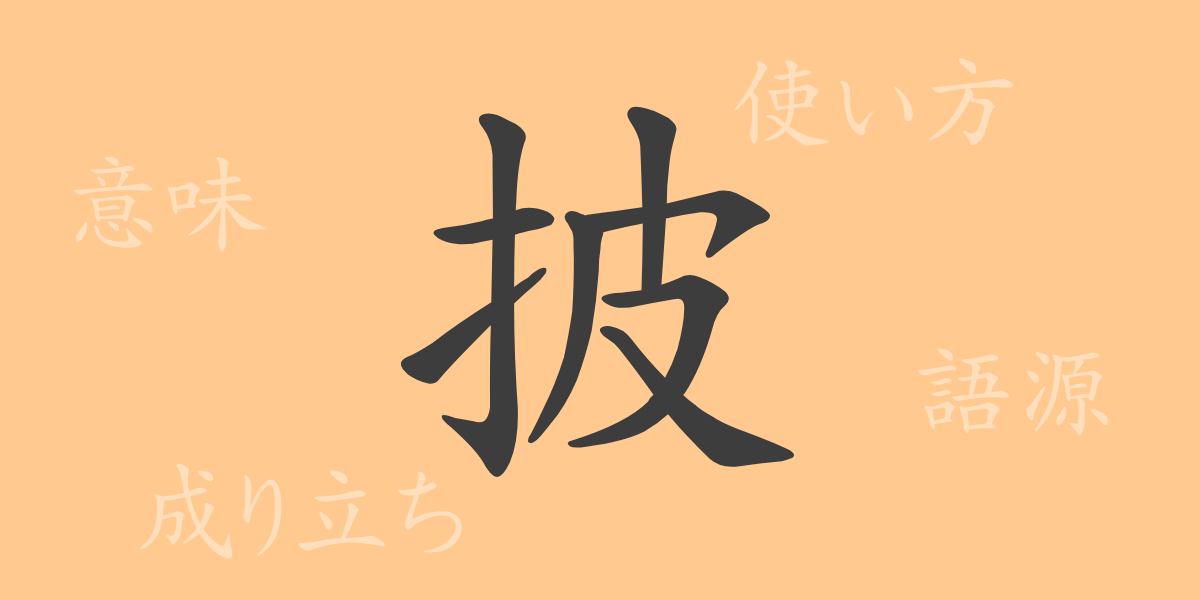Among the written words of Japan, kanji (漢字) are renowned for their complexity and beauty. One of the commonly used kanji, “披” (ひ, hi), stands out due to its form and profound meaning, making it an intriguing character for many. In this article, we will delve into the world of the kanji “披” (ひ, hi), exploring its origins, meanings, usage, and even related idiomatic expressions and proverbs, unveiling its full spectrum.
Origins of 披 (ひ, hi)
The kanji “披” (ひ, hi) is a character that originated in ancient China. This kanji is composed of the radical “扌” (てへん, tehen) representing a hand, and “皮” (ひ, hi) meaning clothing or skin. The “皮” (ひ, hi) part originally indicated animal skin, and with the addition of “扌” (てへん, tehen), it came to mean “to peel skin with the hand” or “to open clothing with the hand.” From these meanings, it evolved to signify “to expose” or “to make public.”
Meanings and Usage of 披 (ひ, hi)
“披” (ひ, hi) primarily means “to open,” “to expose,” or “to make public.” It is often used in contexts such as “披露” (ひろう, hirou), which means to present or show something to an audience. This kanji is frequently used in formal contexts, commonly representing announcements or public disclosures in official settings.
Reading, Stroke Count, and Radical of 披 (ひ, hi)
Understanding the readings and components of the kanji “披” (ひ, hi) is crucial.
- Reading: The on-reading is “ヒ” (ひ, hi), and there is no specific kun-reading.
- Stroke Count: It consists of 8 strokes in total.
- Radical: The radical is 手部 (てへん, tehen).
Idioms, Proverbs, and Phrases Using 披 (ひ, hi)
Idioms, proverbs, and phrases that include “披” (ひ, hi) showcase the richness of the Japanese language. Here are a few examples:
- 披露宴 (ひろうえん, hirouen): A banquet held after a wedding ceremony where the bride and groom announce their marriage publicly.
- 披瀝 (ひれき, hireki): To speak one’s mind openly and honestly.
- 披見 (ひけん, hiken): To open and read a book or to show a new work to others.
Summary of 披 (ひ, hi)
The kanji “披” (ひ, hi) reflects the deep culture of the Japanese language through both its form and meaning. We hope this article has helped you appreciate its origins, meanings, usage, and related idiomatic expressions and proverbs. Each kanji in the Japanese language carries its own history and cultural significance. Continuing to explore kanji will deepen your understanding of the language and its nuances.

























